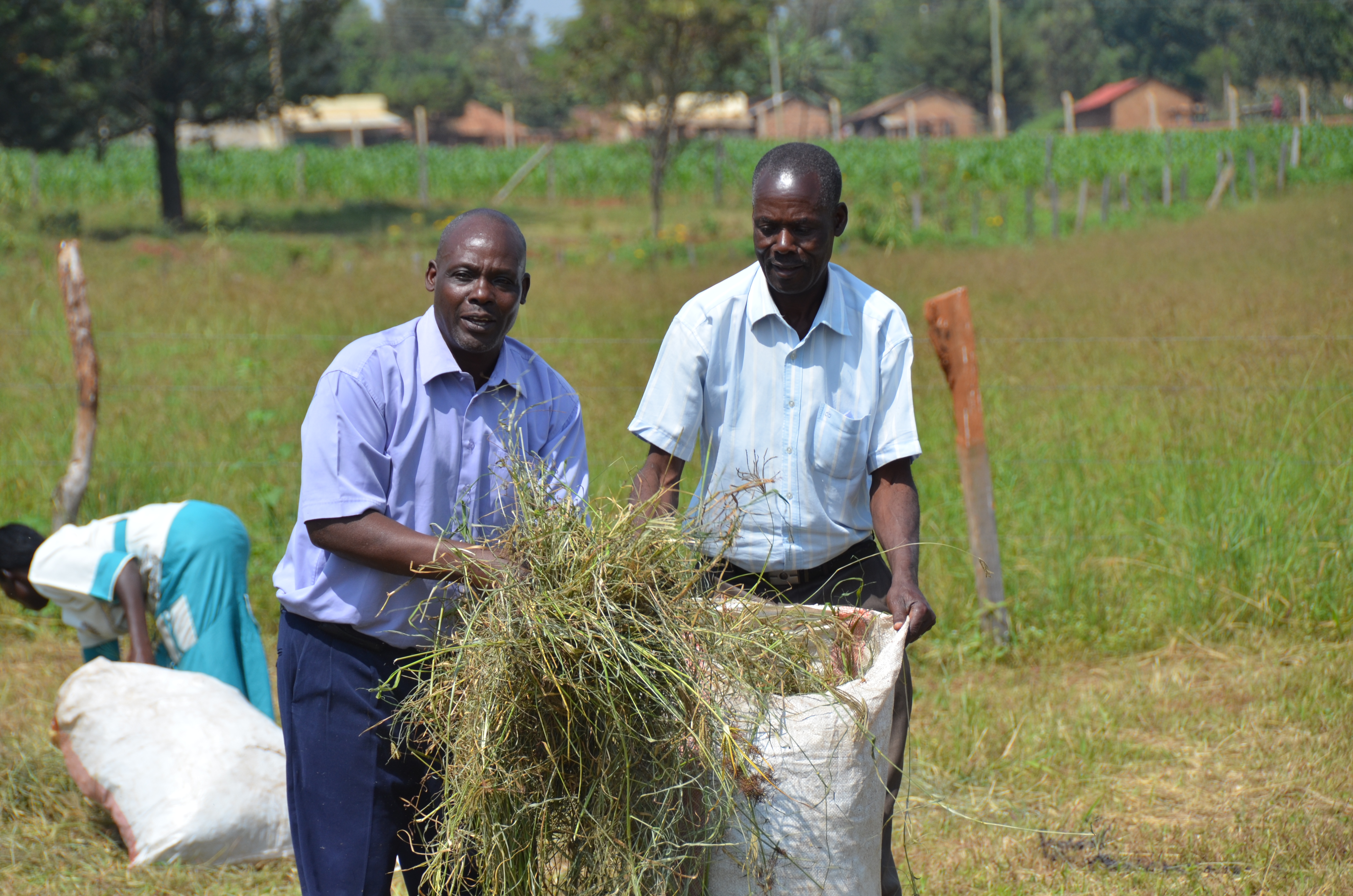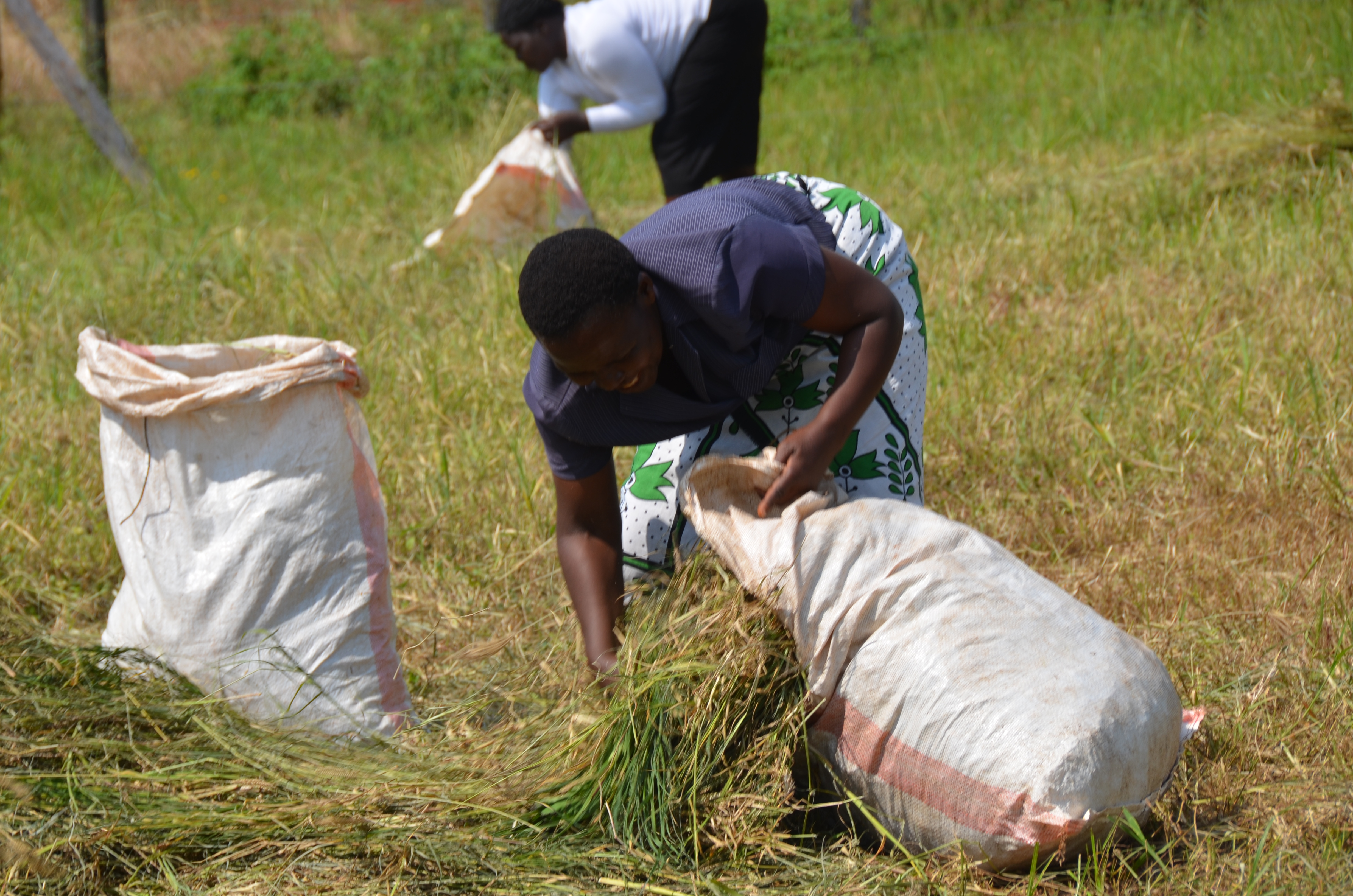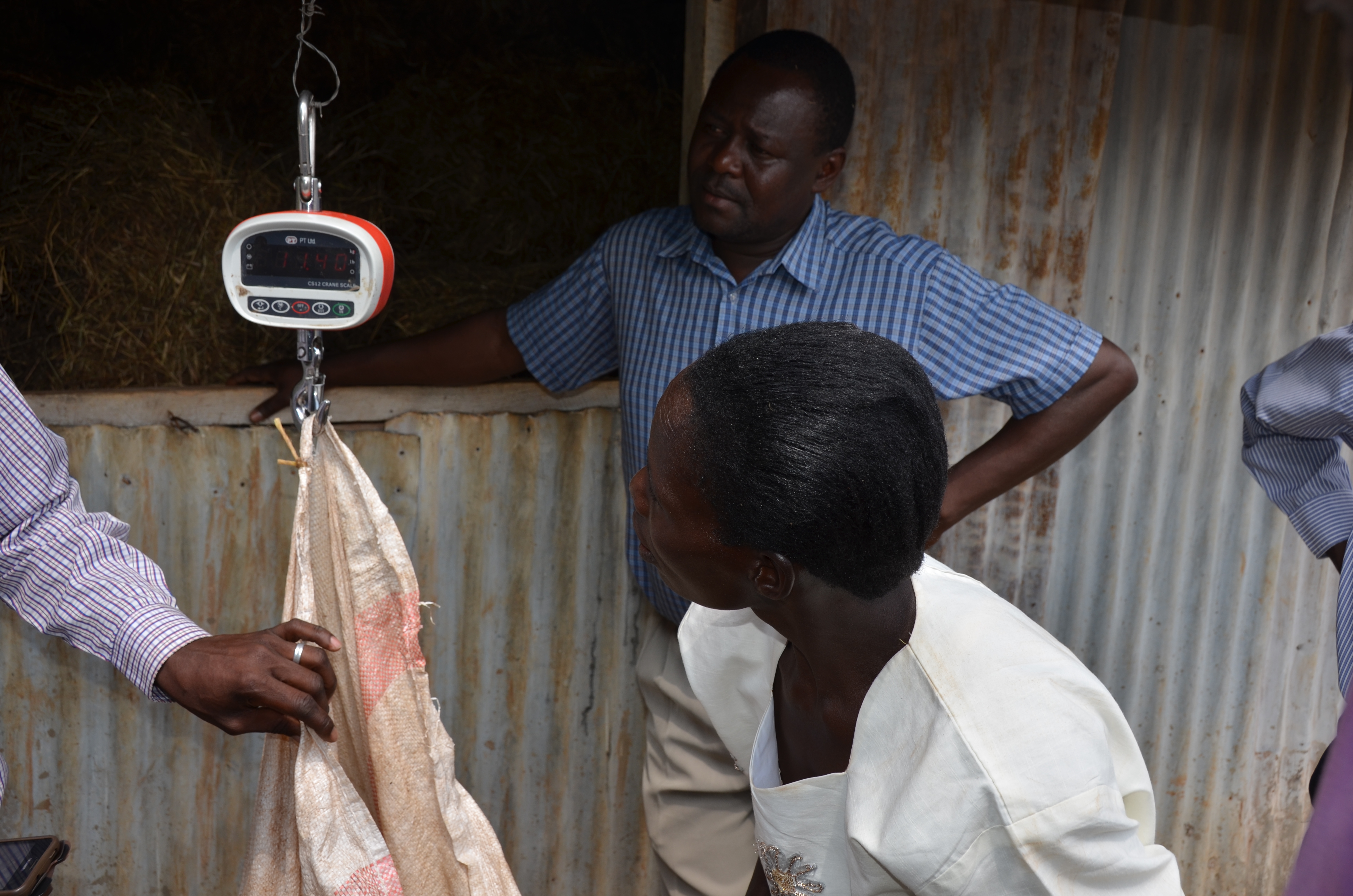Dairy production is an important sub-sector in Kenya, accounting for 8% of the GDP. However, from feed constraints to low productivity, the challenges facing smallholder producers in this value chain are many. As a result, the full potential of this sector is yet to be realized. Often, lack of farmers’ understanding of their dairy cattle nutritional requirements (and how to meet these) is a major impediment to increasing dairy production.
Farmers care most about productivity above everything else
Feed constraints are among the key constraints that smallholder dairy farmers grapple with. Staff of the Mazingira Centre—an environmental research and educational facility of the Kenya-based International Livestock Research Institute (ILRI)—are helping to build the capacity of farmers to improve the productivity of their dairy cows.
For most smallholders, their main interest lies in improving the productivity of their production systems for higher income.
Between June and July 2016, 47 farmers from the western part of Kenya were invited for an intensive four-week training on dairy production. One of the focus areas was dairy feeding and feed management, a major day-to-day activity that takes up significant smallholder dairy farmer resources as well as attention.
All sorts of ‘right’
Good livestock feeding demands more than determining what feeds are available. It also requires understanding all the types of feed resources that are available. It requires knowing what quantity and quality of feeds will sustain a cow’s nutritional levels for the most cost-effective and efficient milk production. High milk-producing cows must feed on the right type of feed in the right quantity and at the right time.
Dairy production is highly resource-intensive. Proper feed management will not only increase cattle milk yields but also save farmers significant time and resources. Dairy efficiency is ensured by maximizing use of available and good-quality feed resources.

Local resources, local solutions
The training session exposed the farmers to many sources of feed available to them, including pasture grass, planted forage crops and the residues of their grain and legume crops after harvesting.
Pasture grass should be harvested during peak growing seasons and preserved for later use in seasons of scarcity. Baling helps to preserve nutrients in the grass as well as to reduce the amount of space needed to store the hay.Planted forages contain significant nutritious content that can be used to help meet a cow’s dietary requirements. Such forages include the leaves and vines of sweetpotato plants, which contain 19% crude protein.
Preserving forages ensures a regular supply of nutritious feed. One way of doing this is by preparing silage.
Hands-on practical sessions
Sweetpotato silage consists of combining the chopped leaves, vines and roots of the sweetpotato plant with up to 30% roots or grass. Silage preparation involves mixing chopped sweetpotato leaves and vines with Napier or other grass and wheat bran in correct proportions. This makes a highly nutritious ‘home-cooked’ meal that can be substituted for commercial dairy meal products. A ferment starter, such as molasses, is then added to aid the process of fermentation and increase the nutrient content of the meal.
The key to preserving sweetpotato silage is ensuring that it is not exposed to air and that all excess water is drained out. To accomplish this, farmers need to construct a special type of plastic tube silo using generally available materials.
The fermentation process takes 30 days. Once prepared, the silage can last up to 400 days.
At the end of the training session, the farmers told the scientists how much they appreciated gaining the knowledge and skills needed to help them meet the nutritional needs of their dairy cows, and thus increase their milk productivity as well as efficiency.
This training was organized and conducted by staff of ILRI’s Mazingira Centre under a Green Innovation Centres (GIAE) program on behalf of the German Federal Ministry for Economic Cooperation and Development (BMZ) and funded by the German Corporation for International Cooperation (GIZ). This work is led by John Goopy, a Mazingira research scientist investigating African livestock emissions of greenhouse gases and their mitigation. The trainers are ILRI staff Jesse Kagai, Eric Ruto and Nelson Saya.
Written by Dorine Odongo, communications and knowledge management specialist with ILRI’s Livestock Systems and Environment program. Read other stories about the work of ILRI’s Mazingira Centre. The pictures used here were taken during the mentioned training session.












Am a small scale dairy farmer in Nandi County and would like to learn the same where can i get the same lesson?.
LikeLike
Dear Isaack, thanks for your inquiry. Kindly share with us your email address so that I can link you up with the scientist leading the program.
LikeLike
In America there is a demand That Farmers Stop Feeding Candy to Cattle which apparently they do during drought seasons. Then there are farmers in Australia feeding their cattle chocolate to improve the flavour. It takes all sorts.
LikeLike
The training i watched aired on KASS TV Wednesday 23rd August 2017 was educative. Am interested in Farming and need know to engage in my future Farming kindly need assistance.
LikeLike
Dear Nicholas,
Thank you for taking interest in our work. You can watch the training video here: https://www.youtube.com/watch?v=kKNsEVHi_eI&spfreload=5 A comprehensive training manual is also available here: http://hdl.handle.net/10568/77004 . In the meantime, keep watching this space (by subscribing to our blog) for more updates regarding upcoming training sessions.
Best regards,
Dorine
LikeLike
Good work. Just finished planting 5 acres Napier, bought a 5 months Holstein heifer. Help me design a nd construct a serious unit for about 20 dairy cows.
LikeLike